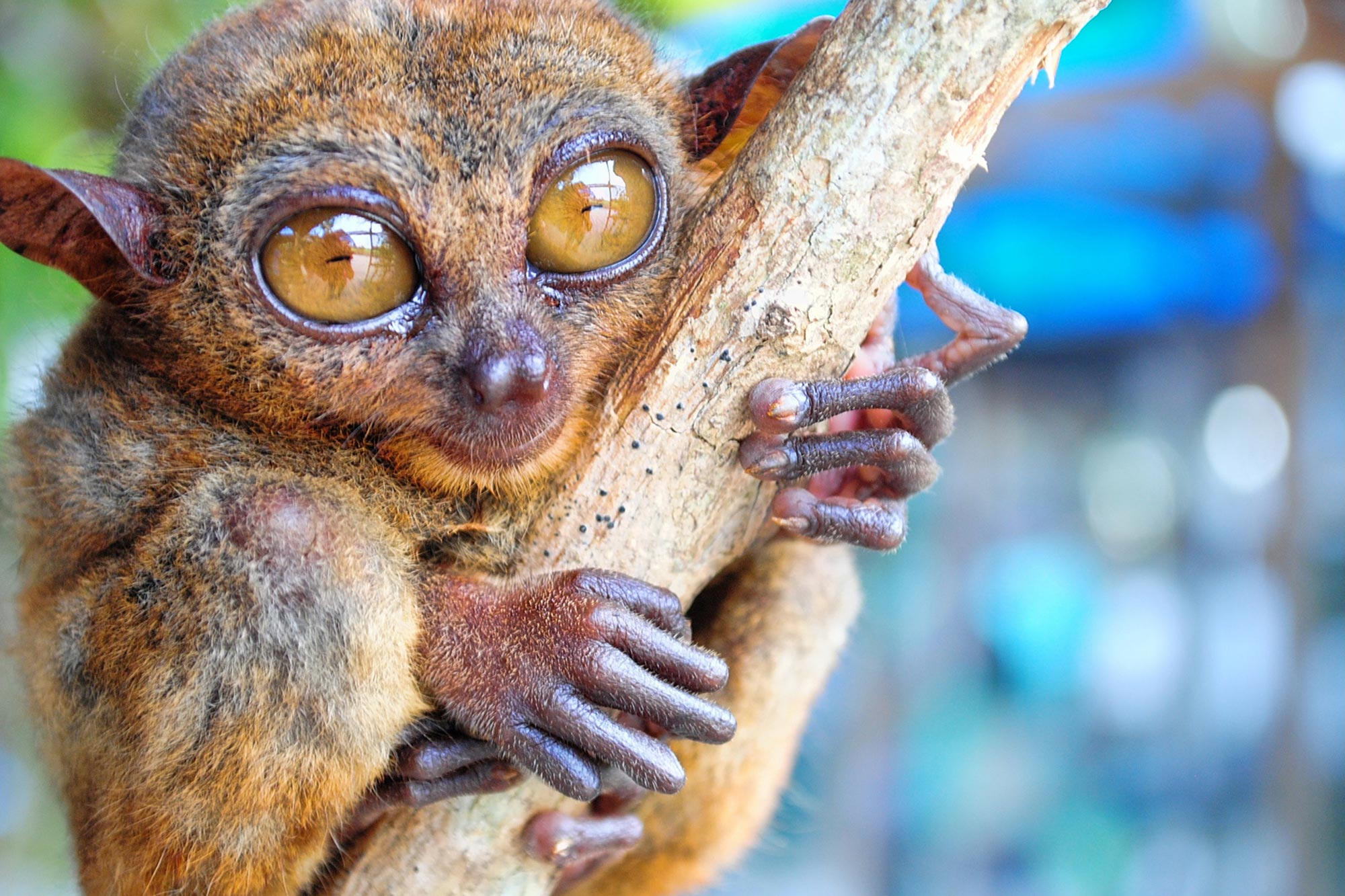La compilación basada en fósiles revela nueva información sobre la evolución y propagación de los primates.
Investigadores de la Universidad de Chicago y el Universidad de Leeds.
Couvrant plus de 900 espèces – environ la moitié vivantes et la moitié éteintes – le nouvel arbre peut aider les scientifiques à comprendre l’histoire des singes, des grands singes, des gorilles et des humains, et comment les espèces sont nées et se sont propagées en el mundo entero.
«Lo que esto nos permite hacer es hacer preguntas básicas pero amplias sobre la evolución de este grupo», dijo Anna Wisniewski, científica geofísica de UChicago, estudiante graduada y primera autora del artículo.

Un nuevo árbol genealógico de primates cubre más de 900 especies, aproximadamente la mitad de las cuales están vivas y la otra mitad extintas. El árbol puede ayudar a los científicos a comprender mejor los orígenes y la propagación de varias especies, como el tarsero espectral de Indonesia (en la foto).
Columpiarse alrededor de los árboles
Si desea crear un árbol genealógico para monos (o cualquier otra especie), existen básicamente dos enfoques. Puedes reunir todos los fósiles que tengas, que pueden no ser muy numerosos. O puede examinar el[{» attribute=»»>DNA of modern species and work backward to estimate how the species evolved—though this requires some assumptions. Each approach has its pros and cons, and is often done piecemeal, resulting in trees that cover only some species or some geographic areas.
Working with UChicago geophysical scientist Graham Slater, Wisniewski set out to turn all of these pieces into a larger whole. She collated data from 116 studies done in the past 40 years using both approaches, into one single, extensive tree. With a birds-eye view, she and Slater could look for answers to questions about the history of us and our closest living relatives.
There are many pieces missing from the story of primate evolution, but scientists do agree on some key details. Broadly, we know that the primates originated between 50 and 80 million years ago. As they spread around the world they grew and evolved into lineages with different body shapes, characteristics, habitats and diets.
But where they originated and how and when they spread remains controversial.
“There are different ways that primates can spread around the globe,” said Slater, an assistant professor in the Department of Geophysical Sciences. “A particular species could arise in North America and disperse into Eurasia; then, new species can branch off from that lineage in North America or Eurasia or both, or go extinct in either location. By working back along tree branches, we can figure out what the most likely scenarios and ancestors were.”
“What this allows us to do is to ask some basic, but big-picture questions about the evolution of this group.”
— UChicago geophysical scientist Anna Wisniewski
Reconstructing an evolutionary tree allows scientists to ask questions about how and why primates moved and changed. They can cross-reference information such as the climate that would have existed at the time of a given species, or what food was available, and watch how those things affect species evolving or going extinct.
Throwing monkey wrenches in the works
Examining the new tree, they found several places where it disagreed with commonly held views among biologists.
For example, scientists have long debated the geographical origin of the ancestor of haplorhine monkeys—a group that today includes African, South American and Eurasian monkeys and apes and the small, insect-eating tarsiers. “It’s hard to tell because you see these guys all over the place today,” explained Slater; but their tree definitively places the ancestor in North America.
With such a large and comprehensive tree, they were also able to run “tests” showing how the answers would differ based on which approach you use to analyze the data.
Biologists who work with molecular-only data sometimes try to correct for the lack of fossils in various ways. For example, Africa didn’t collide with Europe until 30 million years ago, a tectonic shift that would have made it easier for species to move around the world. This is the kind of thing that biologists might try to artificially account for.
But when the UChicago team tested whether or not that “correction” made a difference, they found it didn’t. “That was a significant surprise,” Slater said.
In other words, there seem to be clear limits to the molecular-only approach.
“That suggests that if, say, an extinction takes out a species which was once really common—then you can try all the statistical tricks you want, but you won’t be able to rescue the results,” Slater explained.
“That’s big news for biologists,” he said. “It suggests that the window to infer past evolution of groups is pretty recent. If you try to go too far back, you simply can’t figure out what was actually going on.”
“It’s bad news if your group doesn’t have a fossil record,” said Wisniewski. Many types of animals have spotty or absent fossil records—for example, anything soft-bodied, like jellyfish, don’t readily fossilize.
There are lots of other questions that scientists can study with the tree, they said. “For example, haplorhine primates, like humans, don’t synthesize our own vitamin C, but other primates can,” said Slater. “Did we lose it for an adaptive reason? If so, when and why? We don’t know.”
Reference: “Extant species fail to estimate ancestral geographical ranges at older nodes in primate phylogeny” by Anna L. Wisniewski, Graeme T. Lloyd and Graham J. Slater, 18 May 2022, Proceedings of the Royal Society B.
DOI: 10.1098/rspb.2021.2535
También te puede interesar
-
Encuesta de tránsito de exoplanetas (PETS) de PEPSI. V: Los nuevos espectros de transmisión de Na D indican una atmósfera más tranquila en HD 189733b
-
Las imágenes de alta velocidad y la IA nos ayudan a comprender cómo funcionan las alas de los insectos
-
Tarta de chocolate y sueños marcianos: el helicóptero Ingenuity se despide agridulce | Noticias científicas
-
Brillantes auroras iluminan a los fotógrafos del sur
-
Nuevo descubrimiento: algas y bacterias se fusionan para formar un solo organismo en un laboratorio | Noticias científicas

